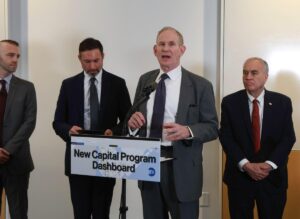Dara Klarfeld, CEO of DRG Talent, specializes in identifying C-suite talent and providing strategic direction to nonprofit organizations.
Attracting top talent always comes with its own set of challenges. But now, with a talent sector focused on remote work and the freedom to live anywhere in the world, recruiting for location-based roles, particularly those places off the beaten path, has reached a new level of difficulty. Despite these challenges, it is possible to find not one but a full slate of six to eight highly experienced and competent candidates willing to relocate for your opportunity. It takes research, marketing, creativity and strategic candidate communication.
As an executive recruiter, I have spent more than 15 years recruiting candidates to locations across the U.S. and training other recruiters to do this work for more than 1,500 organizations.
Here is what I’ve learned about how to get it right.
Highlight The Location’s Pros
Take the time to do ample research on your location before starting your search. Connect with your local chamber of commerce, tourism office or premier realtor and determine what aspects of your area set it apart from others. Often, less popular areas boast lower costs of living, excellent educational options and tight-knit communities—all of which can help candidates maximize their salaries and improve their social lives. Gather statistics on housing, crime and resident satisfaction to help you market the role.
Focus on the unique quirks and features that make the location a hidden gem. Find information about the location’s history, traditions, local events and attractions that can bring this undiscovered location to life for prospective candidates.
Advertise From The Very Beginning
Integrate location into all aspects of the search process from the very beginning. This means publishing expanded job descriptions with a dedicated section on location, addressing common reservations and highlighting the perks of living in the area. When conducting outreach and initial screenings, be sure to include introductory information about the area, invite candidates to ask questions and introduce them to your chamber of commerce, tourism and realtor partners. During interviews, be prepared to not only answer questions from potential candidates about location but also to ask your own questions to source concerns or information gaps they may have about the location and role. This will help you plan an impactful in-person interview and strategize on how to woo the candidate further.
Also, consider moving the in-person interview earlier into the process to give candidates a chance to visit and experience the place for themselves. And, if you have other transplants on your team, make sure candidates have the chance to talk with them about their experiences integrating into the area.
Create A Supportive Transition Process
Internally, it’s important to be prepared for an incoming candidate’s transition. Relocation often means a completely blank slate for candidates, both personally and professionally. Take time to determine a concrete plan to integrate the candidate within your organization and its surrounding community.
This might include a three-, six- and 12-month strategy dedicated to allowing the candidate to learn about the organization and form relationships with others in the organization, as well as community members. Having this plan in place shows candidates that you prioritize ensuring they feel well-settled in their new home.
Offer Financial Incentives
Financial incentives can go a long way toward giving a candidate the last push they need to accept a role in an unpopular location. Benefits like starting bonuses and moving stipends can help offset financial burdens and inconveniences that accompany relocation and further demonstrate your commitment to the candidate’s success and smooth transition.
If this is an achievable offer for your organization, be sure to highlight this aspect in your job descriptions and other communications throughout the search.
Nurture A Sense Of Belonging
Moving to a new area is more than just starting a new job—it means finding a new favorite coffee shop, a new school to send your kids to, a new gym to visit after work, a new job for a partner, a new group of friends for everyone moving and much more. Take time to learn their priorities and what they might need to feel at home throughout this transition.
The organization becomes not just the recruiter and employer but also the coach to help source their needs and challenges and provide guidance on working through them. For candidates with families accompanying them on their move, offer resources for employment opportunities for partners, school and daycare information for children and other community resources that can help the rest of the family settle in. On-site visits are also very helpful for introducing candidates and their families to a new area. Use this as an opportunity to introduce them to potential colleagues, showcase the community, and allow them to envision their new home.
Recruiting top talent can be a daunting experience for organizations, especially when a less well-known location is involved. But, with thoughtful and comprehensive strategies, hiring teams can better navigate location-based challenges to successfully attract a pool of candidates and allow them to feel supported throughout their potential move.
Forbes Business Council is the foremost growth and networking organization for business owners and leaders. Do I qualify?
Read the full article here














